Be the first! Get the latest news and updates - Subscribe to our newsletter!
More high-wire vegetables, leafy vegetables, herbs and soft fruits with LED grow lights
Get on the fast-track to better growth with LED grow lights. Finely-tuned light recipes improve the quality, consistency and yield of vegetables and fruits – even during winter months. Whether you are growing vegetables indoors or growing fruits indoors, LED grow lights complement natural light, supplying the spectrum and intensity that your crops need without adding extra heat. Plus, LED lighting is an efficient way to increase lighting capacity and lower electricity usage.
Discover the greenhouse
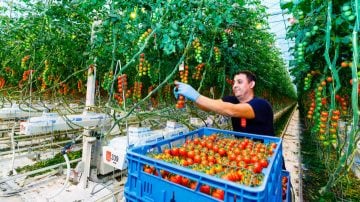
Boost yield, year-round with vegetable grow lights
Philips LED indoor grow lights for vegetables can unlock new potential for your business. Whether you want to boost yield and quality for high-wire tomatoes and cucumbers, grow vegetables year-round in your greenhouse. With Philips LED lights for growing vegetables, you get outstanding results based on our extensive experience and research with a broad variety of vegetables grown in some of the largest, most successful greenhouses in the world.

Grow herbs indoors with LEDs for outstanding results
Achieve higher productivity and better tasting crops when you grow herbs indoors with Philips LED grow lights. Whether you produce basil, microgreens or edible flowers in a greenhouse or vertical farming facility, many growers have named Philips the best LED grow lights for herbs. Our custom LED light recipes enable growers to get excellent color, shape and taste that make their products stand out, when they grow herbs with LED indoor grow lights.

Grow fruits with LEDs for sweet success
If you are growing fruits indoors, like strawberries and other soft fruits, your crops will taste sweeter and fresher with LED grow lights. Whether you grow fruits with LED in a conventional greenhouse or vertical farming facility, Philips LED technology gives you a competitive edge.
Effective solutions for vegetables & fruits

Philips GreenPower LED toplighting
Toplighting helps you add artificial light to natural daylight on dark winter, spring and even summer days for higher quantities of tasty vegetables, fragrant herbs and juicy fruit.

Philips GreenPower LED toplighting force
The ultimate LED grow light for light-loving crops. 1-to-1 HPS replacement utilizing the same connection, while increasing the light levels by 84%.

Philips GreenPower LED toplighting force 2.0
Generate the highest optimized light level with the fewest grow lights possible, a smart LED investment for dynamic light control.

Philips GreenPower LED toplighting compact
Make the easy switch from HPS to all the benefits of LED toplighting, using your existing HPS set-up and trellis construction.

Philips GreenPower LED production module
Productive solution for multilayer systems used to grow lettuce and leafy greens, soft fruits and herbs year-round.

GrowWise control system
Philips GrowWise Control System gives you full flexibility and control over your lighting to improve your crop quality, productivity and operational efficiency.

Philips GreenPower LED interlighting
Bring the right PAR light into the right part of your high-wire canopy where it has the biggest effect on your crop.

Philips GreenPower LED flowering lamp
Improve your strawberry crop results by preventing budding or expediting flowering with LED flowering lamp.
Our proven recipes for growth with vegetables and fruits
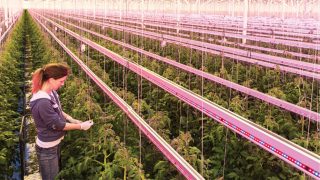
Van Nature/Jami VOF
Find out how greenhouse lighting is helping Van Nature grow tomatoes all year round
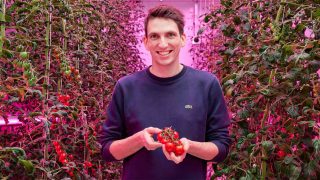
Creating a recipe for growth for indoor farming
At the Philips GrowWise Center we focus on making indoor farming successful. Founded in 2015 to prove the concept of indoor farming, GrowWise has since grown into a research power house.
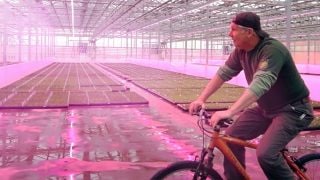
Lucas Greenhouses
Philips LED horticulture grow lights provide sustainable light levels in winter month to improve quality and speed of young plant propagation
Vegetables and fruits blogs

Why avoid white light in basil cultivation
After extensive testing with light recipes using the Philips LED production module dynamic we came to conclusion is better to avoid white light in LED installations.

Additional blue light does not affect taste and crop quality of basil
During the study we wanted to see if the addition of a higher amount of blue light made a difference in the shelf life and quality of the basil.

3 Tips for growing strawberries without daylight with Philips LED
Philips GWCS research growth parameters relevant to a crop: light is obviously essential, but factors such as climate and variety choice are equally important
Vegetables and fruits articles

Grow fruits with LED
Boost yield and increase quality when you grow fruits with LED. Strawberries & soft fruits benefit from Philips LED grow lights in a greenhouse or vertical farm.
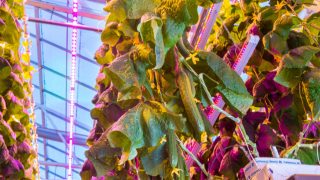
LED lights for growing vegetables
Philips LED grow lights for vegetables can unlock new potential for your business. Boost yield & quality for high-wire crops or produce veggies year-round indoors.
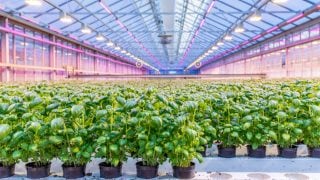
Grow herbs indoors with LED
Get higher yields, more vibrant colors and better tasting results when you grow herbs indoors with Philips LED grow lights. Ideal for greenhouse or vertical farm.
Explore our horticultural segments
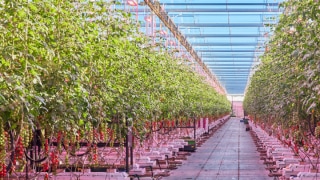
Vegetables & Fruits
High wire vegetables, leafy greens, herbs and soft fruits
Improve the quality, consistency and yield of vegetables and fruits, year-round with finely-tuned light recipes. LED grow lights supply the spectrum and intensity that crops need without adding extra heat.
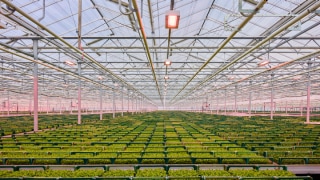
Floriculture
Cut flowers, potted plants, bedding plants & perennials
The right light recipe increases flower size, propagation success and production numbers, while shortening crop cycles. LED grow lights give you full control over your plants and indoor climate in all the growth phases.
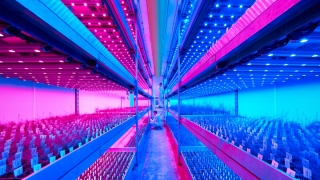
Vertical farming
Grow leafy greens, herbs and fruits without daylight
Producing profitable crops in indoor facilities. LEDs make the dream possible. They provide the optimal growth recipe to, grow healthier, pesticide-free crops, propagate young plants and maximize single or multi-layer yield indoors.
Contact us
Contact certified partners
Philips products are sold through a global network of certified partners. Find partners in your region for more information about Philips LED grow lights.
Contact Philips
What are the best LED grow lights for your situation? We are here to help. Please use our form to submit your request.

